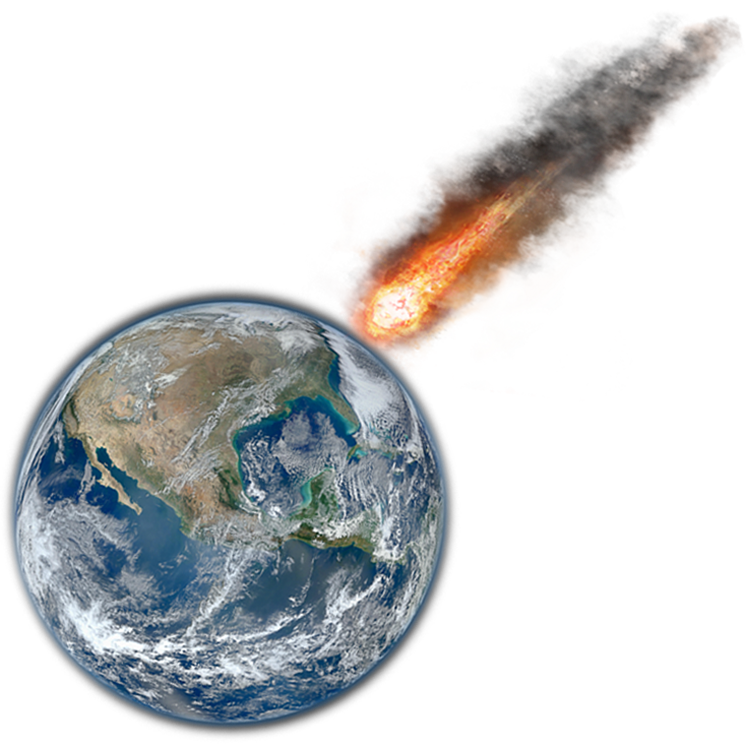ClASSROOM ACTIVITIES
Grade 9 – grade 12
Educators • Grade 9 to 12
Satellites 1.0 - Spot the Difference
Above you now thousands of human-made satellites are orbiting Earth, but what are they for? This introductory lesson highlights different satellite applications and how they affect us in everyday life. Students will get a taste of using satellite imagery to detect changes in the environment. This activity will open discussions linking other disciplines of study, such as geography and environmental sciences.

Recommended: grade 6 to 12
CURRICULUM CONNECTIONS
*For Ontario curriculum. National curriculum connections soon to come.
Grade 1 (Understanding life systems – Needs and characteristics of living things)
1.1 identify personal action that they themselves can take to help maintain a healthy environment for living things, including humans (e.g., walk to school instead of being driven in the car; be careful what they put down the drain at home; practise cleanliness to reduce the spread of germs when helping in the kitchen; show care and concern for all living things)
1.2 describe changes or problems that could result from the loss of some kinds of living things that are part of everyday life (e.g., if we lost all the cows, all the insects, all the bats, all the trees, all the grasses), taking different points of view into consideration (e.g., the point of view of farmers, children, parents)
2.6 use appropriate science and technology vocabulary, including investigation, explore, needs, space, and food, in oral and written communication
2.7 use a variety of forms (e.g., oral, written, graphic, multimedia) to communicate with different audiences and for a variety of purposes (e.g., create a diorama to illustrate the basic needs of plants and animals, including humans)
3.4 describe the characteristics of a healthy environment, including clean air and water and
nutritious food, and explain why it is important for all living things to have a healthy environment
Grade 2 (Understanding Earth and Space Systems – Air and Water in the Environment)
1.2 identify positive and negative impacts that different kinds of human activity have on animals and where they live (e.g., actions of animal lovers and groups that protect animals and their rights, the home owner who wants a nice lawn, people who visit zoos and wildlife parks, pet owners), form an opinion about one of them, and suggest ways in which the impact can be minimized or enhanced
3.3 describe ways in which living things, including humans, depend on air and water (e.g., most animals, including humans breathe air to stay alive; wind generates energy, disperses seeds; all living things need to drink or absorb water to stay alive; water is used for washing and bathing, transportation, energy generation)
3.4 identify sources of water in the natural and built environment (e.g., natural: oceans, lakes, ponds, streams, springs, water tables; human-made: wells, sewers, water supply systems, reservoirs, water towers)
3.6 state reasons why clean water is an increasingly scarce resource in many parts of the world
Grade 3 (Understanding Life Systems – Growth and Changes in Plants)
1.2 assess the impact of different human activities on plants, and list personal actions they can engage in to minimize harmful effects and enhance good effects
3.1 describe the basic needs of plants, including air, water, light, warmth, and space
3.8 identify examples of environmental conditions that may threaten plant and animal survival (e.g., extreme heat and cold; floods and/or droughts; changes in habitat because of human activities such as construction, use of gas-powered personal watercraft on lakes)
Grade 4 (Understanding Life Systems – Habitats and Communities)
3.3 identify factors (e.g., availability of water or food, amount of light, type of weather) that affect the ability of plants and animals to survive in a specific habitat
3.9 demonstrate an understanding of why all habitats have limits to the number of plants and animals they can support
3.10 describe ways in which humans are dependent on natural habitats and communities (e.g., for water, medicine, flood control in wetlands, leisure activities)
Grade 5 (Understanding Earth and Space Systems – Conservation of Energy and Resources)
1.1 analyse the long-term impacts on society and the environment of human uses of energy and natural resources, and suggest ways to reduce these impacts (e.g., turning off the faucet while brushing teeth or washing and rinsing dishes conserves water; reusing or recycling products, or using fewer products, conserves natural resources and energy)
Grade 6 (Understanding Earth and Space Systems – Space)
3.1 identify components of the solar system, including the sun, the earth, and other planets, natural satellites, comets, asteroids, and meteoroids, and describe their physical characteristics in qualitative terms (e.g., The earth’s surface is very young; much of it is covered with water. The moon is the earth’s only natural satellite. Comets are the largest objects in our solar system; their centres contain rock particles trapped in frozen liquid; their tails are made up of gas and dust.)
3.2 identify the bodies in space that emit light (e.g., stars) and those that reflect light (e.g., moons and planets)
Grade 7 (Understanding Life Systems – Interactions in the Environment)
3.1 demonstrate an understanding of an ecosystem (e.g., a log, a pond, a forest) as a system of interactions between living organisms and their environment
Grade 8 (Understanding Earth and Space Systems – Water Systems)
3.1 identify the various states of water on the earth’s surface, their distribution, relative amounts, and circulation, and the conditions under which they exist (e.g., water is a solid in glaciers, snow, and polar ice-caps; a liquid in oceans, lakes, rivers, and aquifers; and a gas in the atmosphere)
3.3 explain how human and natural factors cause changes in the water table (e.g., lawn watering, inefficient showers and toilets, drought, floods, overuse of wells, extraction by bottled water industry)
3.4 identify factors (e.g., annual precipitation, temperature, climate change) that affect the size of glaciers and polar ice-caps, and describe the effects of these changes on local and global water systems
Grade 9 (Academic Science)
A1.1 formulate scientific questions about observed relationships, ideas, problems, and/or issues, make predictions, and/or formulate hypotheses to focus inquiries or research
D2.1 use appropriate terminology related to the study of the universe, including, but not limited to: celestial objects, orbital radius, retrograde motion, and satellite [C]
D3.4 describe the sun’s composition and energy source, and explain how its energy warms Earth and supports life on the planet (e.g., with reference to the types of radiation the sun emits and the interaction of the sun’s energy with Earth’s atmosphere)
D3.6 describe various reasons that humankind has had for studying space (e.g., to develop calendars for agricultural purposes, to forecast weather, for celestial navigation, for religious inspiration) and the conceptions of the universe held by various cultures and civilizations (e.g., Aboriginal peoples; ancient Greek, Mayan civilizations)
Grade 11 (Environmental Science)
A1.1 formulate relevant scientific questions about observed relationships, ideas, problems, or issues, make informed predictions, and/or formulate educated hypotheses to focus inquiries or research
B1.2 analyse ways in which societal needs or demands have influenced scientific endeavours related to the environment (e.g., the development of drought- and pest-resistant crops to address the rising global need for food; research into alternative energy sources in response to demands to address the impact on climate change of burning fossil fuels) [AI, C]
B3.5 describe a variety of human activities that have led to environmental problems (e.g., burning fossil fuels for transportation or power generation; waste disposal) and/or contributed to their solution (e.g., the development of renewable sources of energy; programs to reduce, reuse, and recycle)
Grade 12 (Earth and Space Science)
A1.1 formulate relevant scientific questions about observed relationships, ideas, problems, or issues, make informed predictions, and/or formulate educated hypotheses to focus inquiries or research
B1.2 analyse why and how a particular technology related to astronomical research was developed and how it has been improved over time (e.g., the evolution from optical to radio telescopes and to the Hubble telescope) [AI, C]
D2.2 use a research process to investigate the geological history of an area in Ontario (e.g., use a sequence diagram, geological maps showing main geological units or associated rock types, and/or surficial/bedrock geology maps to investigate the Oak Ridges Moraine or Niagara Escarpment) [IP, PR]
D2.7 investigate interactions over time between physical, chemical, and biological processes, and explain how they have affected environmental conditions throughout Earth’s geological history (e.g., the impact of increasing amounts of atmospheric oxygen on stromatolites; the impact of increasing amounts of atmospheric carbon dioxide on global warming; the influence of plants on the water cycle, other life forms, the atmosphere, weathering, and erosion) [PR, AI, C]
Impact Cratering
Craters are seen on every rocky body in the solar system, but understanding their characteristics and how they form continues to be a challenging task for planetary scientists. This activity focuses on answering some of those questions using an inquiry style activity.

Recommended: grade 9 to 12
CURRICULUM CONNECTIONS
*For Ontario curriculum. National curriculum connections soon to come.
Grade 4 (Understanding Earth and Space Systems)
3.4 describe the characteristics of the three classes of rocks (e.g., Sedimentary rocks often have flat layers, are composed of pieces that are roughly the same size with pores between these pieces that are commonly filled with smaller grains, and sometimes contain fossils. Igneous rocks generally have no layers, have variable textures, and do not contain fossils. Metamorphic rocks may have alternating bands of light and dark minerals, or may be composed predominantly of only one mineral, such as marble or quartzite, and rarely contain fossils.), and explain how their characteristics are related to their origin
Grade 6 (Understanding Earth and Space Systems
3.1 identify components of the solar system, including the sun, the earth, and other planets, natural satellites, comets, asteroids, and meteoroids, and describe their physical characteristics in qualitative terms
Grade 9 (Academic Science)
D2.1 use appropriate terminology related to the study of the universe, including, but not limited to: celestial objects, orbital radius, retrograde motion, and satellite.
D2.4 gather and record data, using an inquiry or research process, on the properties of specific celestial objects within the solar system
D2.5 compare and contrast properties of celestial objects visible in the night sky, drawing on information gathered through research and using an appropriate format
D3.3 Describe the major components of the solar system and the universe (e.g., planets, stars, galaxies), using appropriate scientific terminology and units (e.g., astronomical units, scientific notation, light years)
D3.5 explain the causes of astronomical phenomena (e.g., phases of the moon, comets) and how various phenomena can best be observed from Earth
Grade 9 (Applied Science)
D2.1 use appropriate terminology related to space exploration, including, but not limited to: astronomical units, gravitational pull, and universe
D2.3 use a research process to compile and analyze information on the characteristics of various objects in the universe
D3.2 compare the characteristics and properties of celestial objects that constitute the solar system
Grade 12 (Earth and Space Science)
C2.2 identify geological features and processes that are common to Earth and other bodies in the solar system (e.g., craters, faults, volcanic eruptions), and create a model or illustration to show these features, using data and images from satellites and space probes
C3.9 describe the major external processes and phenomena that affect Earth

